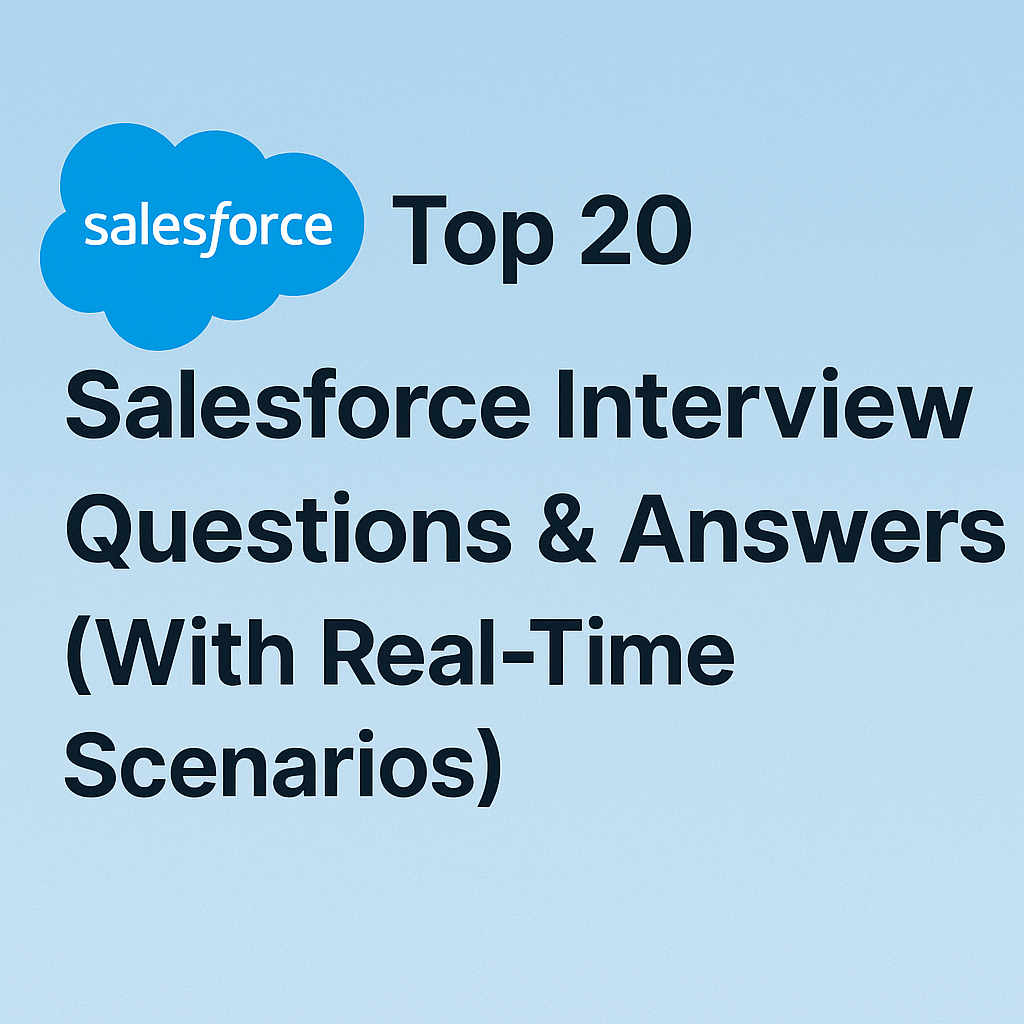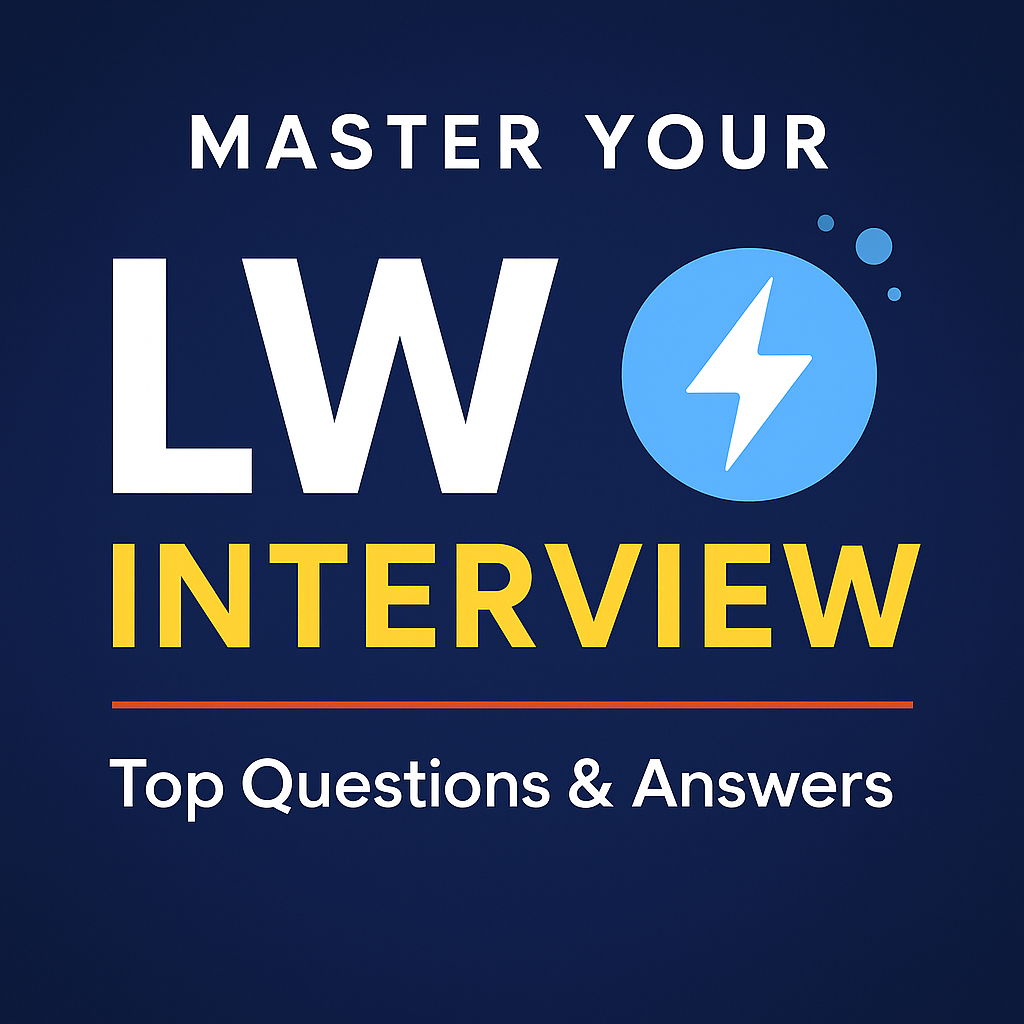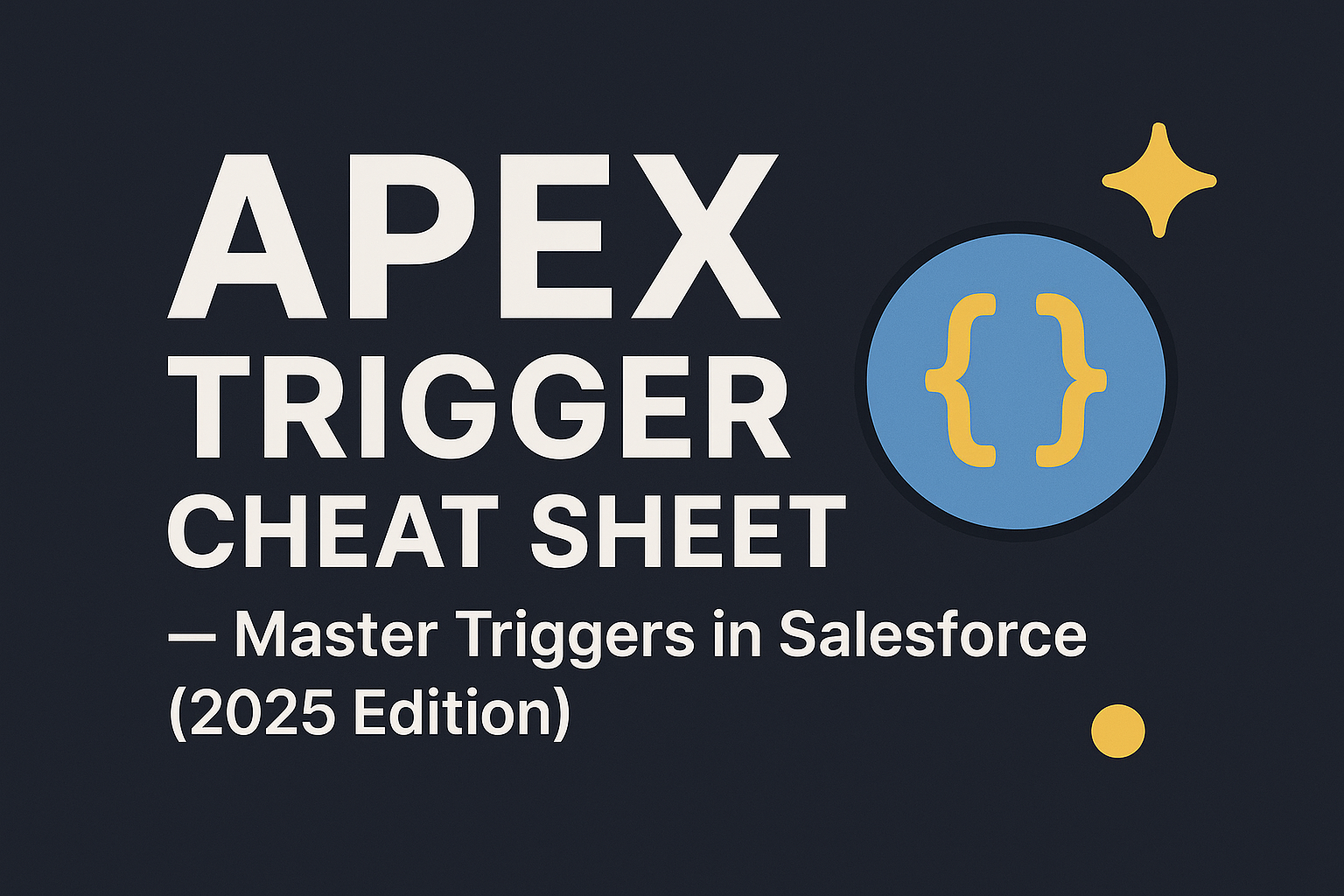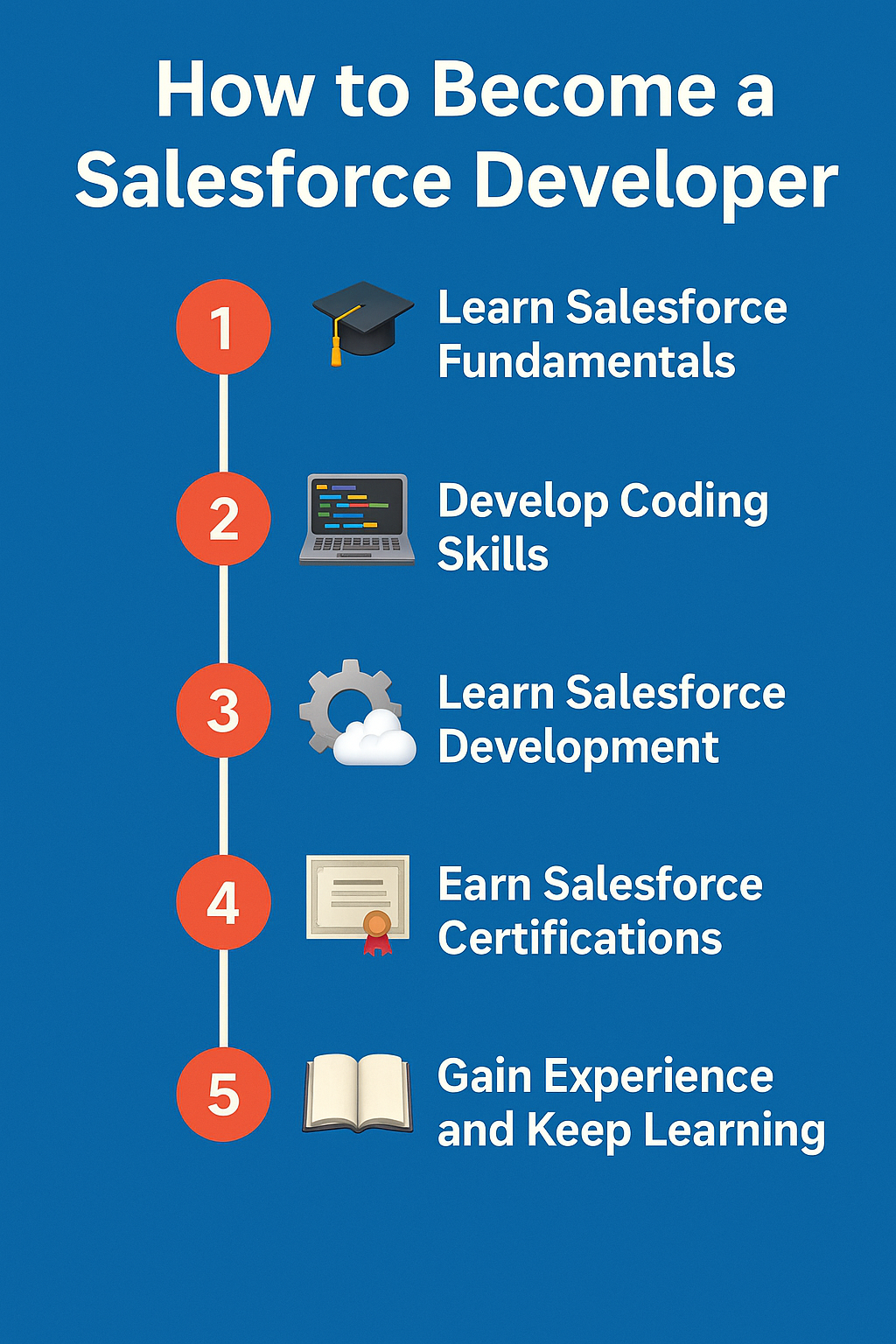Are you preparing for a Salesforce Developer or Admin interview?
Good news 👉 I’ve collected 20 of the most commonly asked Salesforce interview questions along with updated answers, real-time examples, and tips.
Whether you’re a fresher or experienced, this guide will help you crack interviews with confidence.
1️⃣ What is the difference between Workflow, Process Builder, and Flow?
Answer:
- Workflow: Old automation tool, supports only field updates & email alerts. (Now deprecated)
- Process Builder: More powerful (multi-step automation), but also deprecated.
- Flow: The future of automation – supports before/after save triggers, screen flows, callouts, subflows, etc.
💡 Tip: Always say you prefer Flow in new projects since Salesforce announced Workflow & Process Builder retirement.
2️⃣ How do you prevent recursion in Apex triggers?
Answer:
Use a static Boolean variable in a helper class.
Example:
public class TriggerHandler {
private static Boolean runOnce = true;
public static void handleTrigger(List<Account> accounts) {
if(!runOnce) return;
runOnce = false;
// business logic here
}
}
💡 Tip: Interviewers want to see if you understand best practices in trigger frameworks.
3️⃣ Explain @wire vs imperative Apex in LWC.
Answer:
- @wire: Reactive, automatically refreshes when data changes. Best for read-only fetches.
- Imperative: Manual call. Best for conditional logic, DML, callouts.
4️⃣ What is a Mix DML error and how to handle it?
Answer:
Occurs when setup & non-setup objects (e.g., User + Account) are modified in the same transaction.
✅ Fix: Move one DML into @future or Queueable Apex.
5️⃣ Difference between SOQL and SOSL?
SOQL: Query specific objects/fields, returns structured results.
SOSL: Full-text search across multiple objects, returns records from different objects.
6️⃣ Future vs Batch vs Queueable vs Scheduled Apex
- Future: Simple async, no chaining.
- Queueable: Async + chaining, flexible.
- Batch: Handles 50M records in chunks.
- Scheduled: Time-based execution (e.g., nightly jobs).
7️⃣ How do you handle bulk DML in triggers?
- Always bulkify code with collections (List, Map, Set).
- Never put SOQL/DML inside a loop.
- Use Trigger.new/oldMap.
8️⃣ What is Lightning Data Service (LDS) in LWC?
- CRUD without Apex.
- Handles security & FLS automatically.
- Use when simple record fetch/update is needed.
9️⃣ Can Flow replace Apex triggers?
- For simple updates/validations → Yes.
- For complex logic, recursion control, callouts, or huge data → Apex is better.
🔟 Explain Test.startTest and Test.stopTest.
- Creates a fresh governor limit context.
- Runs async methods (future, batch, queueable).
1️⃣1️⃣ 15-digit vs 18-digit Salesforce IDs
- 15-digit: Case-sensitive (UI).
- 18-digit: Case-insensitive (API-safe).
1️⃣2️⃣ Calling Apex method from Flow
- Use @InvocableMethod annotation.
- Input/Output must be List-based wrapper classes.
1️⃣3️⃣ Trigger Context Variables
- Trigger.new, Trigger.old, Trigger.newMap, Trigger.oldMap,
- Trigger.isInsert, isUpdate, isDelete, isBefore, isAfter, etc.
1️⃣4️⃣ Explain @AuraEnabled annotation
- Makes Apex accessible from LWC/Aura.
@AuraEnabled(cacheable=true)→ best for read-only methods.- Without cache → for DML operations.
1️⃣5️⃣ How to schedule a batch job daily at 2 AM?
System.schedule('Daily Batch', '0 0 2 * * ?', new MyBatchClass());
1️⃣6️⃣ What are Governor Limits?
Salesforce’s way to protect multi-tenant environment:
- SOQL: 100 queries
- DML: 150 statements
- CPU: 10 seconds
- Heap size, etc.
💡 Tip: Always mention “Bulkification & best practices help avoid hitting limits.”
1️⃣7️⃣ SOQL for parent-child relationship
- Parent → Child:
SELECT Name, (SELECT LastName FROM Contacts) FROM Account
- Child → Parent:
SELECT Id, Account.Name FROM Contact
1️⃣8️⃣ What is a Wrapper Class?
A custom class to wrap multiple fields/objects into a single structure.
✅ Used in batch processing, LWC, VF tables, checkboxes.
1️⃣9️⃣ Salesforce Order of Execution
Validation → Before Triggers → Custom Validation → After Triggers → Assignment Rules → Workflow → Process Builder → Flow → Commit.
2️⃣0️⃣ Explain Continuous Integration (CI) in Salesforce
CI automates builds & deployments using GitHub, Jenkins, Bitbucket, or Copado.
Ensures code quality, collaboration, and faster releases.
🔑 Final Takeaway
👉 If you can confidently answer these 20 Salesforce interview questions with examples and code, you’ll stand out in interviews.
👉 Don’t just memorize definitions – explain scenarios where you’d use Flow, Apex, LWC, or integrations.
🔥 Want 500+ Real Salesforce Questions & Notes?
Check out my curated interview packs 👉 TrailheadTitansHub.com






